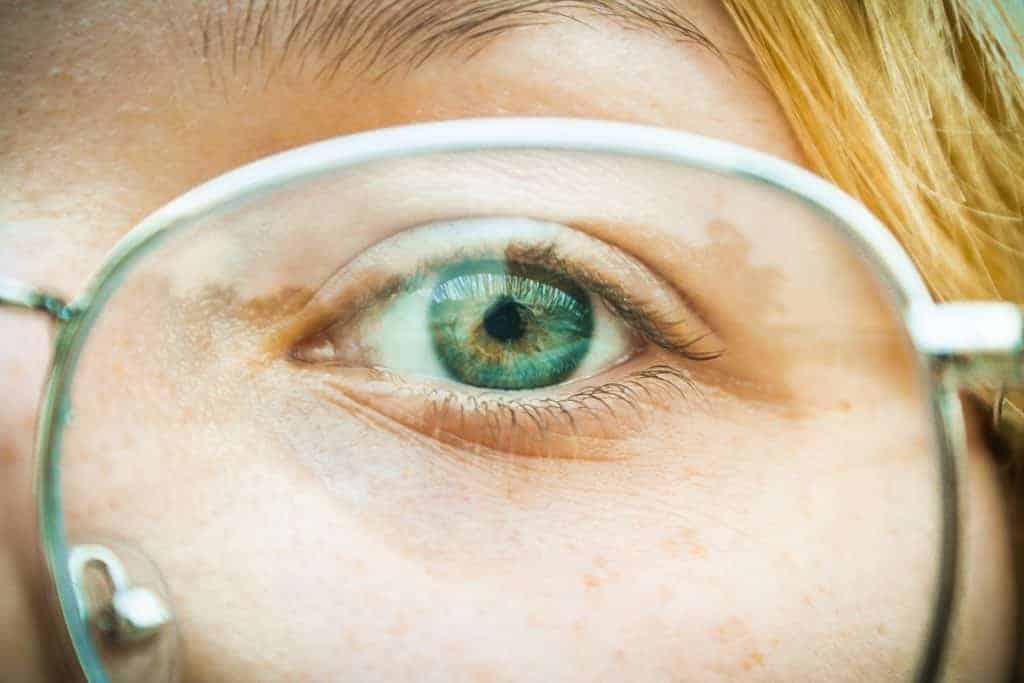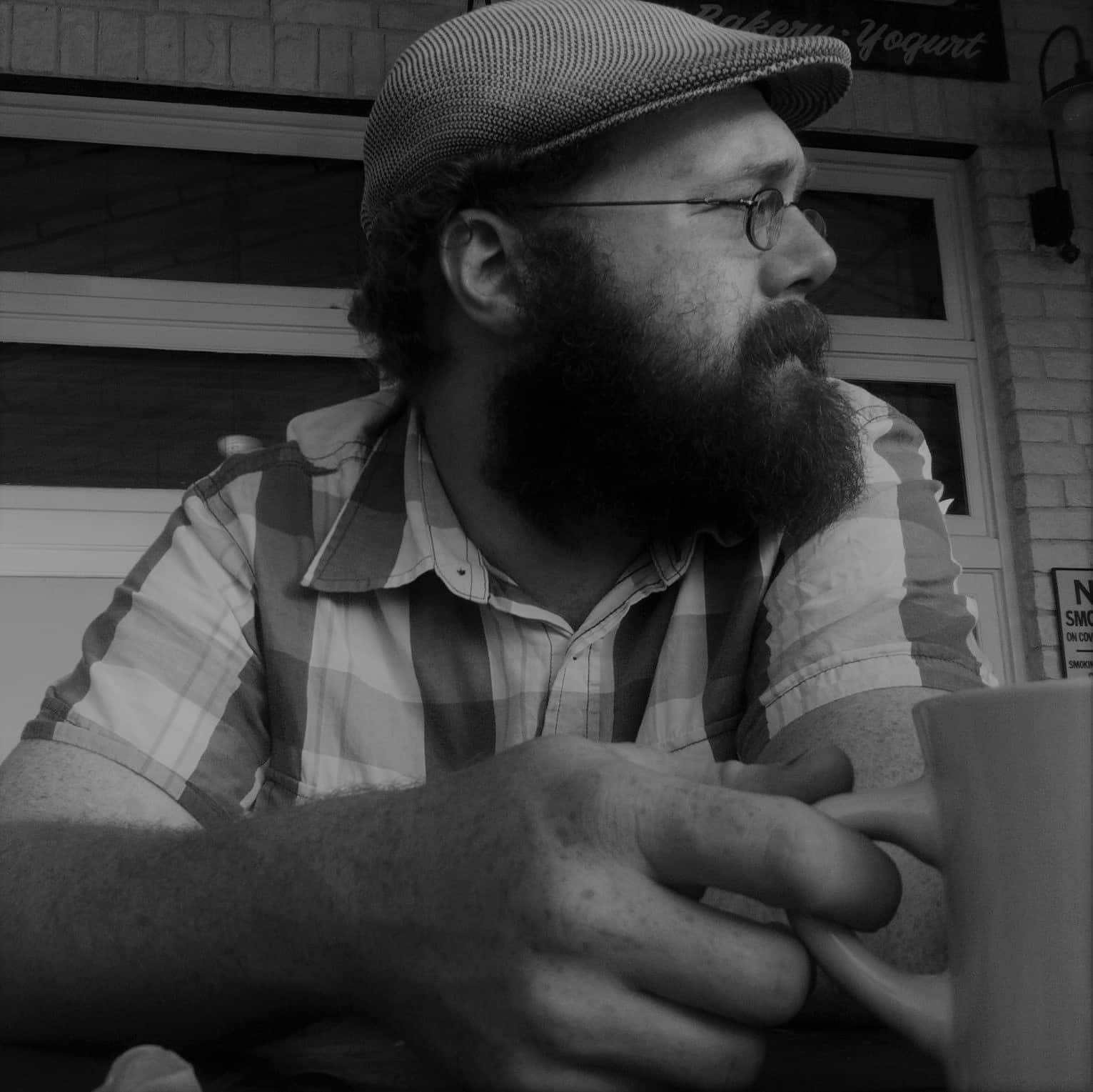The number of disabled college students has been steadily increasing, according to the National Center for Education Statistics. In fact, more disabled students are choosing online college, creating new opportunities for students than ever. Before we dive into uncovering college experiences and interventions for students with visual impairments, let’s first define:
What is a visual impairment?
These three tiers are a good way to get oriented:
Visually Impaired:
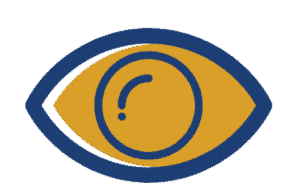
This is often known as simply ‘low vision.’ Lack of visual acuity is primarily what defines visual impairment, as noted by The Royal Institute for Deaf and Blind Children. Generally, we are talking about 20/70 vision or below, which impacts clarity of vision, sharpness, and contrast.
Legally Blind:
This primarily means 20/200 vision or less in the eye that sees better. This term can also be referring to any vision loss that can qualify a student for special education, accommodating devices, or specialized job training.
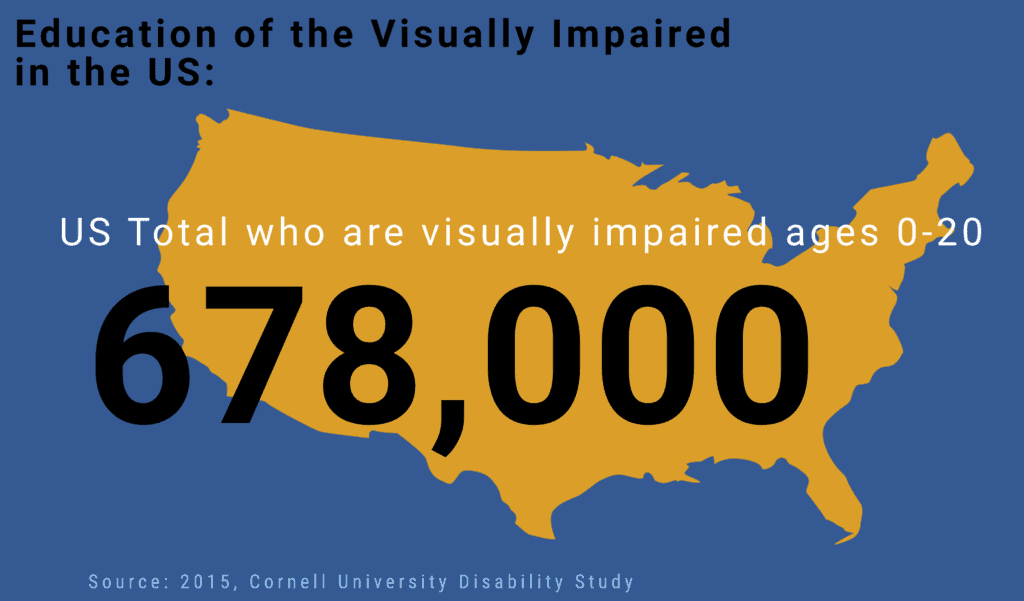
Total Blindness:
The American Foundation for the Blind defines total blindness as an inability to see anything, which includes both eyes.
Now, the statistics on individuals with visual impairments show that even though 42% of blind or visually impaired people are in the workforce, there are only 15% who have completed a bachelor’s degree. Another statistic, as of 2015, is that 29% of blind or visually impaired adults are living below the line of poverty. It is clear that there are distinct struggles this population is forced to encounter in the classroom. Students with physical disabilities in general have a variety of barriers to overcome as they navigate a college education. Clearly, the aforementioned statistics are staggering, and the response needs to be more urgent around making sure visually impaired students are able to have what they need to thrive in an academic environment.
Often visually impaired students have had to learn how to be students with their disability for the majority of their lives. What this means is the transition to college is going to bring unique challenges, but they already have a background in learning accommodations. Generally these students are already well versed in a range of adaptive technologies that they have decided work for them, and can carry that over to their college career. The transition from high school to college, however, is a good time to begin meeting with a counselor, whether it be in the community or on campus. An academic coach or a career counselor could fit the bill here, and act as a support for the student to help them structure their academic experience accordingly. This can include creating a degree program that fits their career goals, finding resources on campus that speak to their interests in general, and support learning about current adaptive technologies and accommodations.
Social life for blind or visually impaired students on campus can be especially challenging. In 2015 USA Today put out an article called Students that are Blind Face Greater Challenges on Campus. This article forces the seeing community to think about what it’s like to be at a party and not have access to all of the physical social cues we use to communicate. This can include eye contact, seeing the ways someone is looking at a watch and applying that to the idea that they probably have somewhere to rush off to. Blind or visually impaired students don’t have the benefit of the primary ways we communicate, which can make it more challenging to build connections with non-visually impaired peers. That being said, isolation can contribute to academic struggle and even drop out rates for visually impaired students.
Experts in the field of disability studies suggest that one of the best ways to integrate blind and visually impaired students better in a classroom setting is by employing the principles of Universal Design. This basically brings the concepts of accessibility to the table from the beginning of structuring a lesson or even as far back as drawing the architectural designs for the classroom or building. Strategies such as these eliminate the need for accommodations later, because all learning and physical differences were already considered in the design stage. Because this is not always possible, creating and making accessible the best accommodations and adaptive technologies for visually impaired students is the next best alternative.
This can include:
- Modifications to course materials that account for the needs of each individual student.
- Encouraging and making available, for visually impaired students, the option to use alternative formats for exams and classroom presentations
- Ensuring students have accessible and adaptive options for dorm rooms and also classroom settings, including labs and student life resources
- Ensuring that visually impaired students will have access to alternative forms of classroom notes
- Offering a variety of counselors and a team of support staff to help visually impaired students navigate campus resources as well their emotional needs
- Offering a range of assistive technologies and apps
There are many important ways to support visually impaired college students, and it is the responsibility of the entire campus community to make sure they are treated with respect and have what they need to succeed.
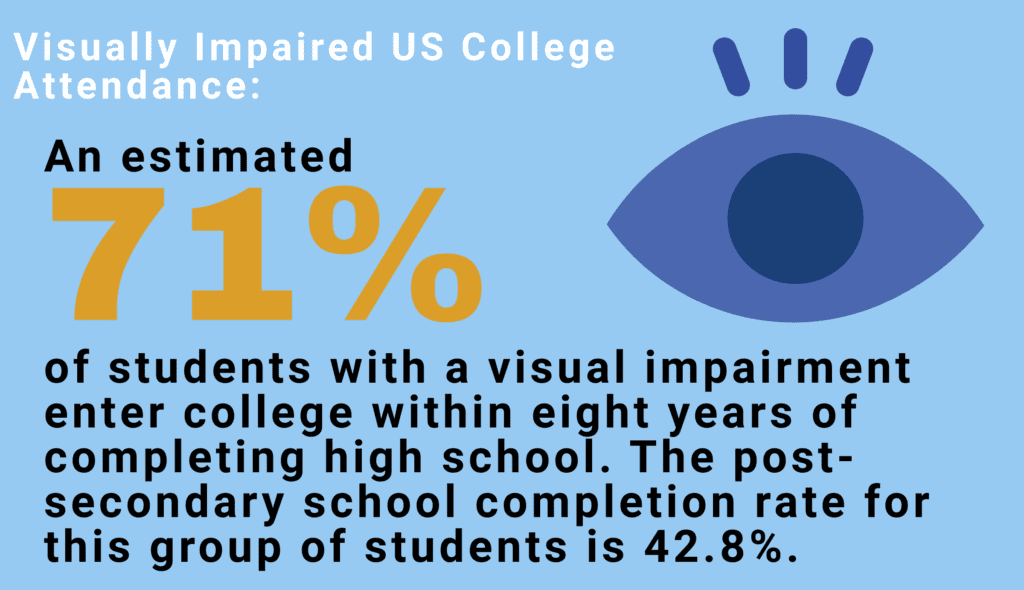
Understanding Your Rights
The key texts for all students with disabilities are Section 504 of the Rehabilitation Act of 1973, and the Americans with Disabilities Act of 1990.
- Section 504 of the Rehabilitation Act of 1973 prohibits discrimination against any person on the basis of their disability (defined as a physical or mental impairment that limits some aspect of their life) by any entity receiving federal funding. For students, that means any college or university that receives federal financial aid must provide reasonable accommodations for students with disabilities. This applies to essentially every higher education institution, save those that receive no federal funding whatsoever.
- The Americans with Disabilities Act of 1990 goes a step farther than the Rehabilitation Act, outlawing discrimination against disabled people across the board – not only in federal agencies and federally-funded entities. Much like the Civil Rights Act, the ADA means that, for students, colleges and universities cannot discriminate on the basis of disability. Institutions, for example, must provide accessible facilities, access for service animals, access to telecommunications, and similar accommodations. It also provides recourse for students who are denied accommodations, namely the right to sue.
These pieces of landmark legislation guarantee students crucial rights:
- Access to Information: Students have a right to access all of the necessary information for their courses. That means all lectures, texts, and other materials must be provided to them in an accessible form.
- Access to Services: Students have a right to all of the services provided to college students, and their institutions are required to provide access to those services. Services may range from career counseling to healthcare to student housing.
- Access to Technology: Students have a right to accessible technology necessary to do their coursework, including (as confirmed by the 9th Circuit Court of Appeals in 2019) to access the internet.
Accommodations for Blind and Visually-Impaired College Students
- How active is your college’s office of disability services? Every college is required to adhere to the Americans with Disabilities Act and Section 504 of the Rehabilitation Act of 1973. Your institution should have an office of disability services, but most colleges and universities require students with a disability to register with the office before receiving accommodations.
- If your college does not provide reasonable accommodations, the American Bar Association recommends contacting the National Disability Rights Network (see below).
- The Visual Impairment Training Program (VITP) at North Carolina Central University prepares students for licensure as a Teacher of Students with Visual Impairments (TVI) or for national certification as an Orientation and Mobility (O&M) Specialist. This distance-learning or weekend on-campus program also requires a 350-hour internship. https://legacy.nccu.edu/soe/vitp.cfm
How to Advocate
The Center for Disability Rights is a non-profit organization dedicated to Integration, Independence, and Civil Rights for Disabled People. Founded in 1990, CDR members were instrumental in the passage of the ADA and continue to advocate for resources and enforcement for the act.
The Disability Rights Legal Center is a non-profit advocacy group founded in 1975 to protect the legal rights of disabled people. The DRLC educates organizations about integration for disabled people, and litigates discrimination cases.
Note-Taking Resources/ Assistive Technology
American Federation for the Blind
This article on Note Taking 101 covers various assistive technology resources used by campus professionals and students in different situations.
- BrailleNote Apex is a portable note taking device designed by Humanware. Users can make and edit documents and access their computer using BrailleNote’s braille display or QWERTY keyboard.
- Braille ‘n Speak is a computer that allows visually-impaired users to write in Braille, as well as translate written words into spoken words with its built-in speech synthesizer.
- The KNFB Reader is a smartphone and tablet app that translates printed writing into Braille or speech by simply taking a photo of the text.
- The JAWS (Job Access With Speech) screen reader is the most popular screen-reader program, providing visually-impaired users with access to screen content via synthesized speech or Braille display.
- MaxiAids provides a range of specialized keyboards for visually-impaired users, including Braille keyboards, large print, overlays, and more.
- ORCA — https://help.gnome.org/users/orca/stable/introduction.html.en is a free, open source, screen reader that provides access to the graphical desktop via speech and refreshable braille.
Apps
- AriadneGPS (named for the princess who guided Theseus out of the Minotaur’s labyrinth) is an app that uses GPS technology to guide walkers in real time through sound, vibration, or speech alerts.
- BeMyEyes is a free app and service that connects visually-impaired users with sighted volunteers. With the volunteers’ help and the smartphone camera, users can navigate difficult tasks like checking expiration dates or finding their way in a new place.
- ColorID is a unique app that can identify color for blind and visually-impaired users. The app also translates real-world colors into their hex values for exact matching.
- LookTel is a money-reading app for visually-impaired users. The LookTel app uses the smartphone camera to identify a bill and speak its denomination. 21 international currencies are currently supported.
- TapTapSee is an app for the visually impaired that allows users to simply point their smartphone camera at an object and identify it using artificial intelligence.
Groups and Organizations
- Guide Dogs for the Blind is one of the nation’s leading guide-dog schools, providing disabled people with guides since 1947.
- The Seeing Eye is a philanthropic organization that breeds, raises, and trains seeing-eye dogs. Seeing Eye uses German Shepherds, Labradors, Golden Retrievers, and cross-breeds.
- The American Council of the Blind (ACB) is a national organization made up of local chapters advocating for independence, safety, and equal rights for blind and visually-impaired Americans.
- The American Foundation for the Blind (AFB) is a national non-profit founded in 1921 to advance advocacy, technology, and legal rights for the blind and visually-impaired.
- The National Disability Rights Network is a non-profit organization for members of the Protection and Advocacy (P&A) Systems and Client Assistance Programs. The NDRN was established by Congress and includes agencies throughout the US and US territories. They can provide legal representation and other services for Americans with disabilities.
- BOSMA Advocacy is dedicated to protecting the rights of blind and visually-impaired people in the workplace, through advocating for laws and regulations, as well as meeting with business leaders to provide assistance for blind workers.
- The Lighthouse Guild is the nation’s leading non-profit vision health organization, formed from the merger of Jewish Guild Healthcare and Lighthouse International (two century-old organizations). Lighthouse provides eye care, rehabilitation, and behavioral health at no cost to patients.
- The United States Association of Blind Athletes is a national non-profit that organizes sporting events for blind athletes, from local-level events for children to elite Paralympic competition.
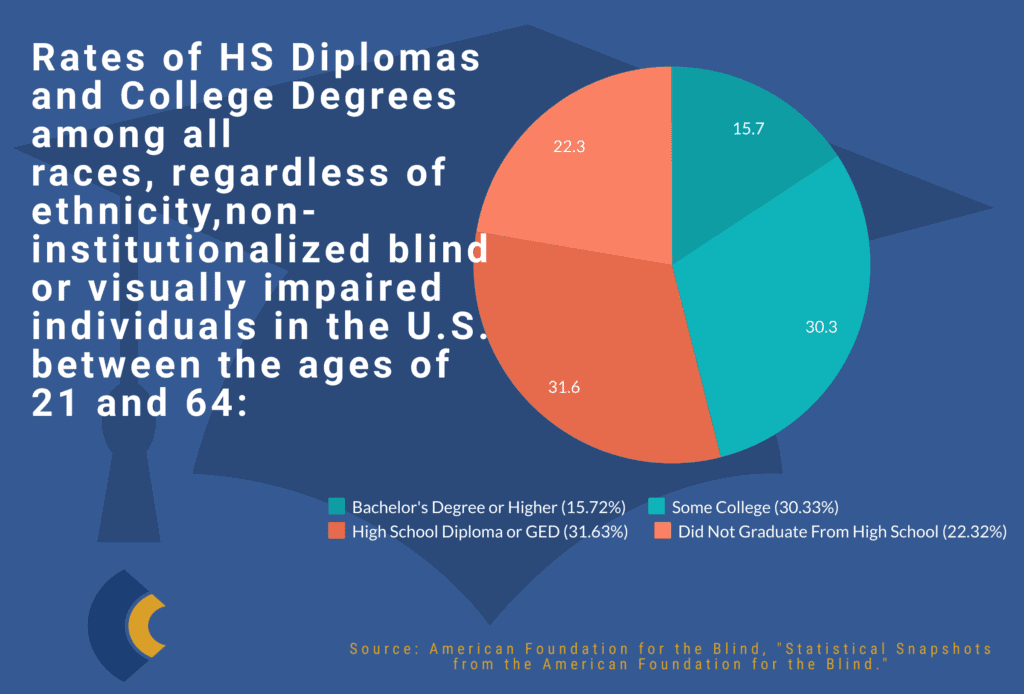
Multimedia Resources
- The Be My Eyes podcast covers topics as varied as being blind in the workplace to watching movies and the humor in blindness.
- Blind Abilities was originally founded as a resource for blind and visually-impaired college students, but has grown into a enormously useful source of information on all things related to living as a blind person in the 21st century.
- The Blind Access Journal podcasts discusses topics of accessibility, especially concerning accessibility technology. Recent episodes include voting with a Braille ballot, setting up home wifi, and how to use your Roomba.
- The Blind Bargains podcast focuses on technology and resources for blind and visually-impaired consumers, with a focus on accessibility, affordability, and value. Topics range from how accessible Blue Apron is for blind customers to safe social distancing for the blind.
- That Blind Tech Show podcast covers exactly what it says – the newest in accessibility technology for blind and visually-impaired users, along with current events and news related to blind technology. (Part of Blind Abilities)
- Perkins School for the Blind provides an in-depth webcast on preparing blind and visually-impaired students for college. Topics include working with professors, getting involved with other students, and making the most of college disability resources.
- SUNY Oswego offers a helpful Q&A for colleges students who have impaired vision, including note taking resources, turning in assignments, taking part in field trips and labs, and similar college experiences.
Cornell University offers a thorough clearinghouse of research, data, and statistics on disability in America, certain to be useful to any disabled student, or any student studying disability rights.
Related:
Best Disability-Friendly Colleges
Complete Guide to Colleges for Students with Disabilities
